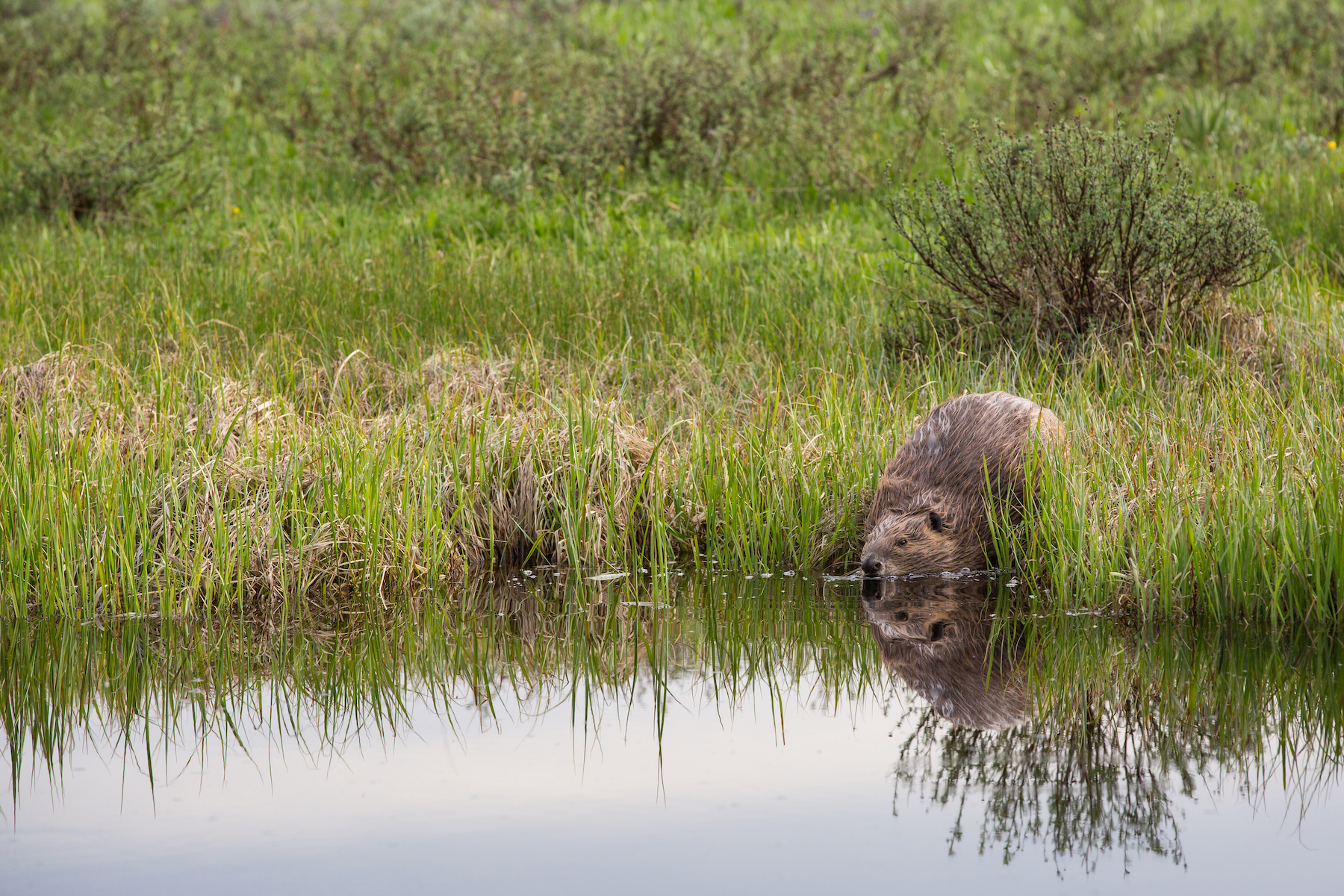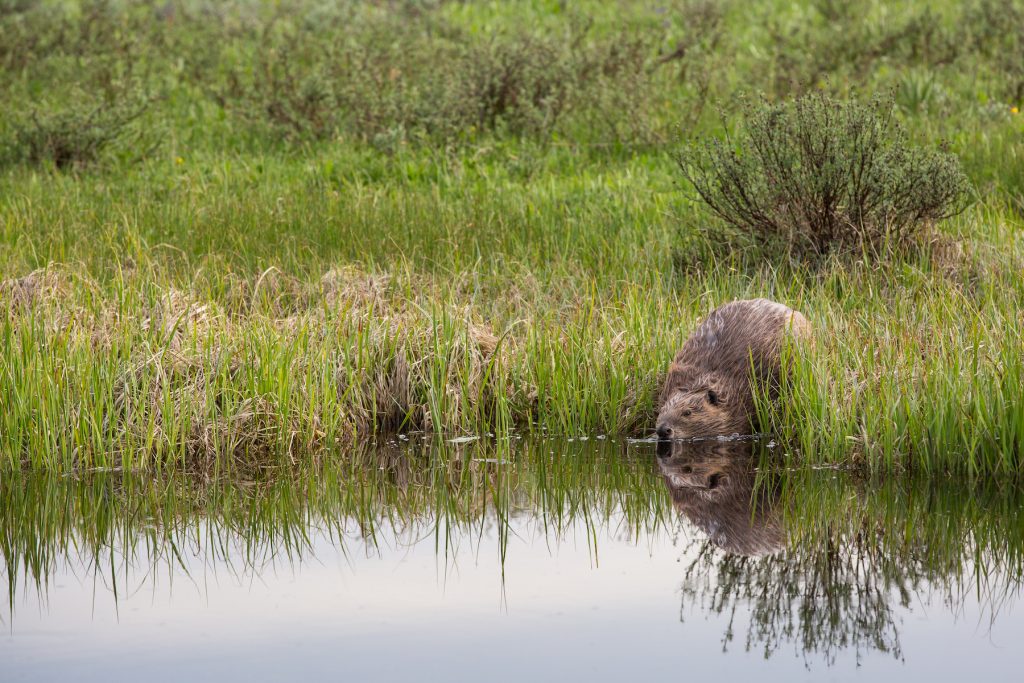Next time you’re flying up to the Portland Jetport and the third rerun of Endgame just isn’t cutting it, look out the window. Much of the northern half of the continent is a sprawling landscape dotted with kettle lakes, winding rivers, and other vestigial scars of a world once drowned in ice. Certainly, of the processes that shaped the bedrock Bowdoin sits on, none are as immediately evident as the glaciers that covered it for seventy thousand years. Today, however, a much tinier (and cuter) force gnaws away at the landscape of modern Maine. Our waterways are a record of glaciers, true, but they’re just as much a record of the furry engineers that now inhabit them: Castor canadensis, the North American beaver.

Calling beavers “ecosystem engineers” isn’t science mumbo-jumbo: beavers quite literally show an understanding of the forces of hydrology that backdrops their dams. When a stream encounters a thin opening in bedrock that constricts its flow, its waters gurgle and bubble as it narrows through the gap. It is this gurgling that first allures a beaver to build its dam. In essence, beavers can “‘hear’ the geometry of the river basin.” There, a pioneering beaver colony lays the first branches of speckled alder that they consider too bitter for food, pointing the branches upstream to catch and anchor sediment as part of this keystone layer of wood. Layer upon layer of mud and stick convexes upstream, like the shape of the Hoover Dam, to combat increasing pressure from the pond when the dam plugs more water. As the colony gets larger, beavers build secondary and tertiary dams upstream to relieve pressure on their lodge, so that within generations, the colony will have terraformed their entire forest environment with ponds and meadows along a stairway of rivers and dams.
This process of familial expansion has impacted nearly all of the waterways in the northern United States, especially following their bounce back to pre-colonial populations. For instance, in the North Woods of Minnesota, 90% of streams flow through at least one dam, and overall, 15% of land is covered by beaver ponds or meadows. In the process, beavers unknowingly change the ecology, hydrology, and chemistry of their ponds— often by simply slowing down water.
At its simplest, slower water cannot carry as much sediment, and in beaver habitats, this has incredible repercussions. Regions that experience alarming rates of erosion benefit from dams because streams cannot carry away soil. So, if rivers cannot carry sediment, they must deposit it instead of erode: beaver ponds carry much more sediment than other streams, increasing the amount of organic matter stored in its pond bottoms. When abandoned dams are broken through, this standing stock of nutrients encourages plant growth and a more biodiverse wet meadow after flooding settles. In the Colorado River, for instance, the distribution of sediment deposited in a dam flood influenced where a diverse plant community was able to grow.
By the same token, beaver habitats are essentially wetlands, critically changing the biogeochemical conditions around dams. Deeper waters and deeper soils foster denitrification, a form of bacterial activity that filters waters affected by nitrate pollution from things like fertilizers. Depositing more sediment also increases the carbon found in beaver ponds. Altogether, these wetland conditions increase biodiversity by a third of what’s found without beaver habitation. Because slower, sediment-laden streams downstream of dams are more likely to curve and branch, more beaver colonies can use them. With these prolific changes, the continent might truly, as environmental journalist Ben Goldfarb puts it, “better be termed Beaverland.”
Scientists have kept log (pun intended) of these benefits for quite some time— the foundational study on their role as geomorphic agents was published in 1938— but attempts to work together with the rodents in structures called beaver dam analogs (BDAs) have only caught on in recent years. In one of its earlier uses, ecosystems analyst Michael Pollock worked on the restoration of a stream that steelhead trout used in their migration inland. Before long, “beavers came and set up shop” on Pollock’s somewhat ad-hoc dams, and the results his team saw were incredible: BDAs increased habitat and reared more than three times more steelhead than an undammed stream nearby.
Despite its happy ending, Pollock argues that their study isn’t the paper to end all papers. How effectively BDAs can mimic and aid beaver dam construction still requires much more testing, and whether it’s worthwhile to reintroduce beavers at all is still debated. Nonetheless, some local governments and farmers alike who benefit from their application have begun to consider the idea of a true BDA Beaverland, so long as regulators get on board too. Whether the costs of building and maintaining BDAs are worth a beaver dam’s biogeochemical and ecological benefits are still up for talk among officials hesitant to rely on these furry rodents. But with all its controversy, you can’t deny that the impacts of Beaverland truly seem to be giving glaciers a run for their money.
